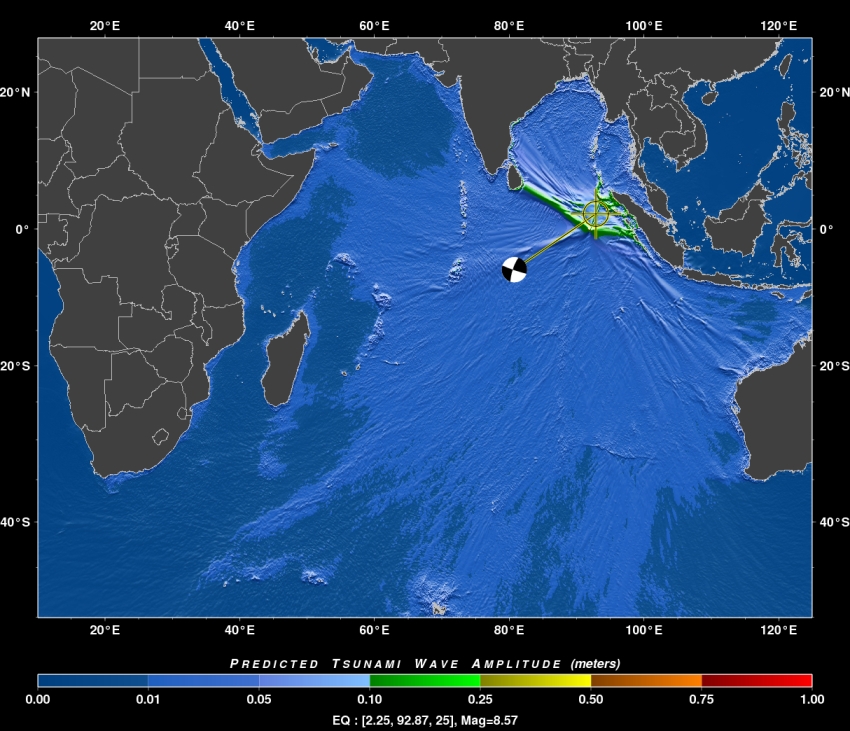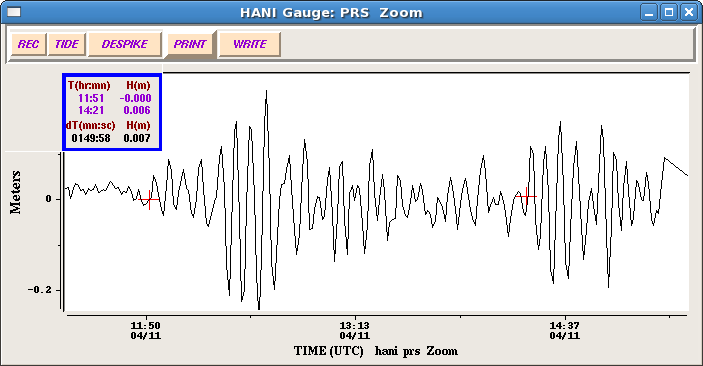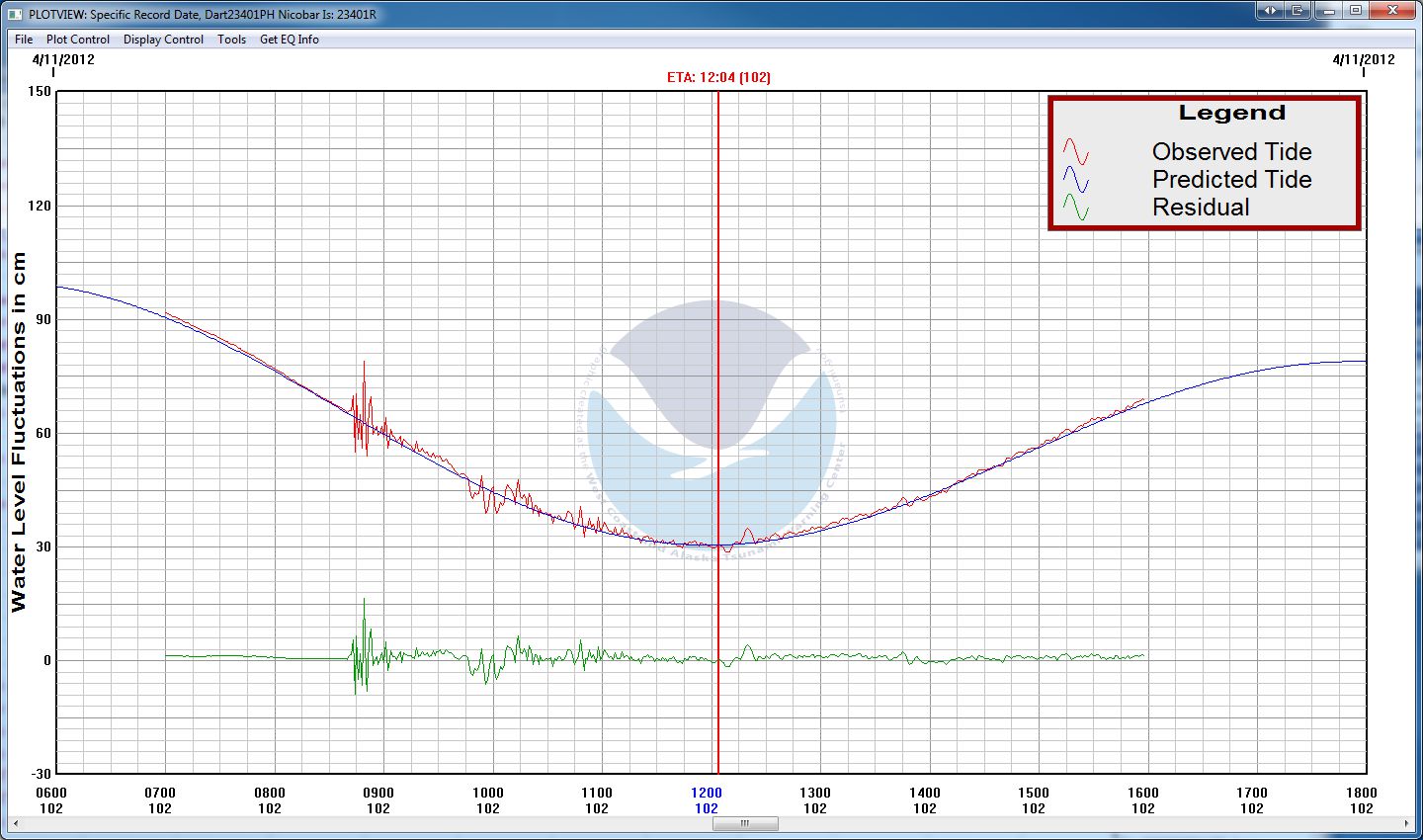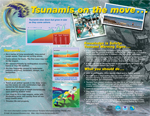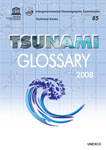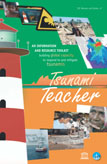|
PTWC ISSUES WARNING FOR M7.7 HAIDA GWAII, BRITISH COLUMBIA EARTHQUAKE
The 28 October 2012 (0304 UTC) / 27 October 2012 (2004 PDT, 1704 HST) magnitude 7.7 Haida Gwaii earthquake generated small, non-destructive tsunami that were measured in Alaska, British Columbia and southward to Calfornia and in Hawaii; much smaller waves were also measured throughout the Pacific. Tsunami Warnings were issued by WC/ATWC for SE Alaska and Northern British Columbia at 2007 PDT, and downgraded to Advisories at 0049 PDT 28 October for SE Alaska and at 0247 PDT for Northern BC. Advisories were also issued for Southern BC through Northern California. A Tsunami Warning was issued by PTWC for Hawaii at 1909 HST 27 October, and downgraded to an Advisory at 0101 HST 28 October. Waves up to 5 ft were observed on Maui and the Hawaii Island, but little damage was reported statewide. One person died on Oahu during the tsunami warning when a speeding vehicle rammed into parked cars that were waiting for the closed coastal road to reopen.
THREE MAJOR EARTHQUAKES STRIKE PACIFIC BASIN IN A NINE-DAY PERIOD
Three major earthquakes struck Central America and the Philippines from 27 August - 5 September 2012. Notable were the 27 August El Salvador earthquake (Mw 7.3) in which PTWC issued a Fixed Regional Warning; the 31 August East Philippine earthquake (Mw 7.6) in which PTWC issued an Expanding Regional Warning; and the 5 September Costa Rica earthquake (Mw 7.6) in which PTWC issued a Fixed Regional Warning. Tsunamis were measured in these events, with damage and injuries reported from the El Salvador event.
The El Salvador M 7.3 earthquake occurred on 27 August 2012 at 04:37 UTC at a depth of 131 km as a result of thrust faulting on or near the subduction zone interface between the Cocos and Caribbean plates. A maximum 36 cm amplitude tsunami was measured in Baltra, Ecuador.  El Salvador preliminary maximum inland inundation was reported at 300 meters and maximum runup heights at 5 meters. Coastal flooding was also reported in Nicaragua. In the aftermath of the event, the Intergovernmental Oceanographic Commission (IOC) and ITIC were requested to coordinate post tsunami survey assessments and help improve capabilities of El Salvador to respond to future events. Post-tsunami surveys are essential for scientists to understand tsunamis and to evaluate potential improvements to forecasting models used by tsunami warning centers. NOAA's Pacific Tsunami Warning Center (PTWC) in Hawaii provides warning information to El Salvador and other countries throughout the Pacific. PTWC will benefit greatly from understanding how their predictions corresponded with the recent event field measurements. Post-tsunami survey methodology has improved in recent years with ITIC working closely with the IOC to develop a recently published manual to standardize the practice. (Photo credit: Dr. Hermann Fritz, Georgia Institute of Technology) El Salvador preliminary maximum inland inundation was reported at 300 meters and maximum runup heights at 5 meters. Coastal flooding was also reported in Nicaragua. In the aftermath of the event, the Intergovernmental Oceanographic Commission (IOC) and ITIC were requested to coordinate post tsunami survey assessments and help improve capabilities of El Salvador to respond to future events. Post-tsunami surveys are essential for scientists to understand tsunamis and to evaluate potential improvements to forecasting models used by tsunami warning centers. NOAA's Pacific Tsunami Warning Center (PTWC) in Hawaii provides warning information to El Salvador and other countries throughout the Pacific. PTWC will benefit greatly from understanding how their predictions corresponded with the recent event field measurements. Post-tsunami survey methodology has improved in recent years with ITIC working closely with the IOC to develop a recently published manual to standardize the practice. (Photo credit: Dr. Hermann Fritz, Georgia Institute of Technology)
The East Philippine M 7.6 earthquake occurred on 31 August 2012 at 12:48 UTC at a depth of 35 km as a result of reverse faulting within the oceanic lithosphere of the Philippine Sea Plate. Preliminary location of the earthquake indicates this was an intraplate event, 50 or more km to the east of the subduction zone plate boundary between the Philippine Sea and Sunda plates. A maximum 12 cm amplitude tsunami was measured further north at Omaezaki, Japan.
The Costa Rica M 7.6 earthquake occurred on 5 September 2012 at 1442 UTC at a depth of 40 km as a result of thrust faulting on or near the subduction zone interface also between the Cocos and Caribbean plates. A maximum 15 cm amplitude tsunami was measured at Galapagos, Ecuador. PTWC initially issued a Caribbean Tsunami Watch, which was immediately withdrawn when the earthquake location was reevaluated to be on the Pacific side of Costa Rica. PTWC then issued a Pacific Fixed Regional Tsunami Warning.
 |
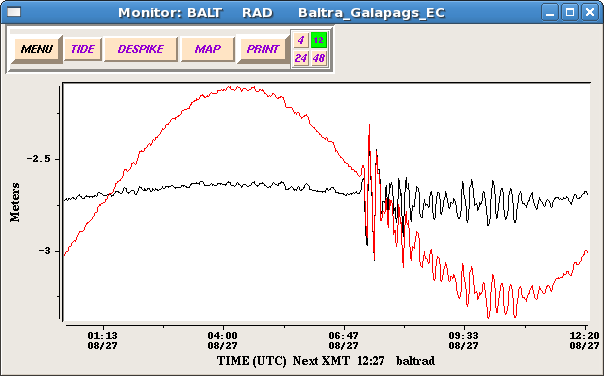
|
 |
Captions: Left: PTWC RIFT model simulation showing the predicted coastal tsunami wave amplitudes from the 27 August 2012 thrust earthquake.
Right top: Although only a very small tsunami (0.1 m amplitude) was recorded on Acajutla, El Salvador sea level station, a much larger tsunami (0.4 m) was observed at Baltra, Galapagos Islands, Ecuador (PTWC).
Right bottom: DART 43413 deep-ocean instrument off Mexico recorded a 1 cm tsunami (PTWC).
|
|
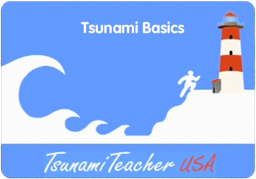
![]()
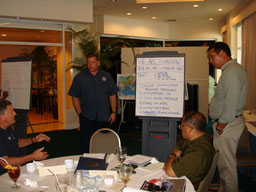


 UNESCO
UNESCO
 IOC
IOC
 NOAA
NOAA







